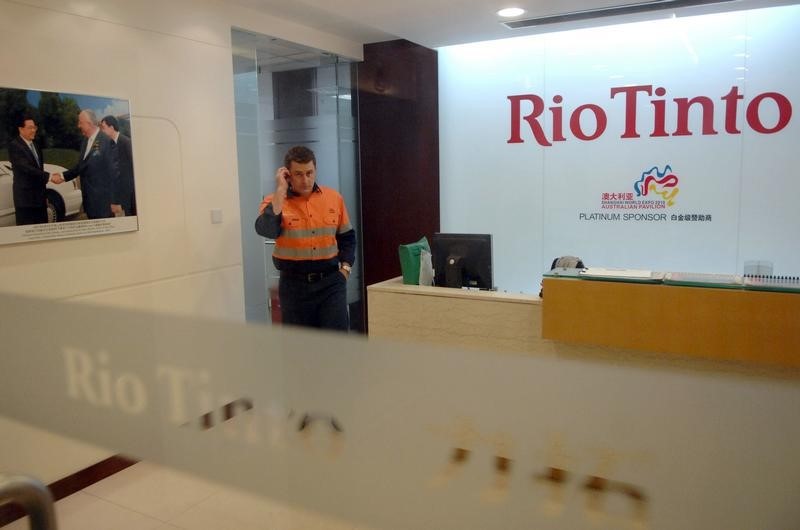(Repeats item issued earlier. The opinions expressed here are those of the author, a columnist for Reuters.)
By Clyde Russell
LAUNCESTON, Australia, April 19 (Reuters) - Wanted: One mine, just started or close to production, preferably gold, must be in secure country with high-quality ore body and low costs. Also, must be cheap.
The above shopping list was the most common response from investors when quizzed as to what they are looking for in the commodity sphere during last week's Mining Investment Asia conference in Singapore.
The near impossibility of satisfying the requirements probably explains why there aren't that many mining deals actually being done, despite the low prices for many commodities.
While the big companies often grab the headlines with large acquisitions (think Rio Tinto (LON:RIO) buying Alcan, BHP merging with Billiton and later spinning most of it off in South 32), the engine room of the mining sector tends to be among the juniors.
It's in this space that private equity, family offices and mid-tier miners play, looking for cash to develop projects either through deals or taking a punt on raising money through a public listing.
It was evident at the Singapore conference that there's plenty of money looking for investment opportunities, but it was also equally evident that the bar for any decision is being set too high for the current market.
Investors showed little interest in providing seed capital for exploration projects, taking the view that it would take too long for them to generate any return, even if the potential rate of return is very high.
Also, investors weren't interested in higher risk jurisdictions, such as Mongolia or Myanmar, with the main argument being these projects don't offer a high enough premium over similar ventures in safer locations, such as Canada and Australia.
"Ideally, you want a gold mine that's just started output, located in Western Australia near good transport. Trouble is, even if you can find that, it's not cheap," said one investor, preferring not be named as he isn't authorised to speak to the media.
It may sound somewhat counter-intuitive, but the rout in commodity prices for the past few years has made mergers and acquisitions (M&A) considerably harder, as potential investors now have to factor in the possibility of an extended period of low prices and the consequent impact on project economics.
This means that while there are numerous mines and projects available, very few are sitting in the lowest quartile on the cost curve, and this reduces their appeal in the current market.
Distressed assets for sale tend be distressed for a good reason, most likely because their cost base is too high and they are only viable in the longer term if the investor has a bullish view of future prices.
PRICE GAINS WILL BOOST ACTIVITY
It will take a sustained rise in commodity prices to make assets that sit higher on the cost curve more attractive, or an increase in risk appetite.
In the fourth quarter of last year, mining M&A reached the lowest levels recorded since consultants KPMG started monitoring the sector in 2012, according to the latest quarterly newsletter.
"The new lows touched both deal value and deal volume," KPMG said. "Eleven major deals were announced worldwide, eight of which exceeded $100 million. Total global deal value amounted to $3.2 billion, 70.5 percent below the previous quarter."
Gold was the leading sector for M&A in the fourth quarter of last year, accounting for 51 percent of the deals by value, with a single iron ore deal making up 21 percent of the value and coal taking third spot with 10 percent of the value.
If the smaller players are waiting for an improvement in commodity prices and sentiment, are the majors doing the same?
BHP Billiton (LON:BLT) BHP.AX Chief Executive Andrew Mackenzie told The Australian newspaper that the world's biggest miner is "ready to pounce," but he also expects any deals to be "few and far between."
"We don't want to be too precious about that and if there's a deal of the century we will go for it, but we don't want to buy back complexity and we certainly don't want to buy back a whole raft of assets that if they had been sitting in the portfolio four or five years ago we would have divested," he said in an interview, published on April 12.
In other words, if BHP sees a great opportunity, it will take it, but it's not really the current focus for the company.
Anglo American AAL.L , the London-listed miner that emerged from South Africa, is trying to shrink itself to success by putting several assets up for sale.
So far there has been some interest expressed in the group's Australian coal assets, which may be worth $1.5 billion, but a firm offer has yet to emerge. GLEN.L is also seeking to divest Australian coal assets, this time trains rather than mines, with the commodity producer and trader hoping to close a deal by the third quarter. has managed to sell a 40 percent stake in its agricultural unit for $2.5 billion as it seeks to cut debt.
Overall, the mining sector is still battling to attract significant M&A, and it's instructive that gold, one of the best performers so far this year, is the preferred choice of many investors.
This suggests that a pre-condition for more M&A activity is a recovery in prices, or at least a sense that they have bottomed. (Editing by Richard Pullin)
